Act 1: Remembering Grandma’s banana jam
On those rare days in my grandparents’ home in Coorg when there wasn’t a hot cooked breakfast, soft loaves of bread were sliced up and served on large platters. For those who wanted toast, it would be made on the stovetop, on a cast iron griddle. Or, more excitingly, a slice of bread would be clamped into an old fashioned wire toaster and held just close enough to the wood fire in the kitchen to give it a golden glow and allow it to pick up a hint of smoke. Then you’d settle down with eggs made any way you liked, fresh butter, honey, and an array of homemade jams to choose from – pineapple, boodhi kumbala (ash gourd), kaipuli, marmalade, and the undisputed favourite by far, banana jam.
Grandmother’s banana jam had a deep burgundy colour and a smooth, easily spreadable texture. The fragrance that filled the house when it was cooking had a warm, buttery sweetness. And the flavour! There was nothing else like it – rich, fruity, with hints of clove, cinnamon, and caramel. It’s no surprise that the banana jam was always polished off within days of its being made.
It was a long process, starting with peeling large bunches of ripe bananas. The two varieties she used were mara balé, or the large, red skinned variety, chondé balé, with a creamy yellow flesh. These made the best jam.
Once peeled and chopped into thick slices, the bananas would be placed on the wood fire in a large, wide pan with enough water to cover them. Slow, gentle cooking followed, the fruit barely simmering. Grandmother would busy herself with other tasks, but come by periodically to check if the fruit had softened enough, using a big wooden spoon to press a chunk of banana to the side of the pan, adding a touch more hot water if necessary.
When the fruit was completely soft and pulpy, the contents of the pan would be strained through a bamboo basket into another vessel. The strained juice was mixed with sugar, lime juice, some cloves and sticks of cassia and brought to a vigorous boil. Hidden somewhere in a seething mass of bubbles was the magic moment, when unappealing grey began to turn ever deepening shades of red. Grandmother would stir the pot to prevent the contents boiling over, then hold up the wooden spoon, dripping hot garnet drops onto a cold saucer to gauge if it was ready to take off the fire. When that moment came, the pan would be hoisted off the fire by the maid, and grandmother would direct the molten flow of jam into the waiting line of empty jars with her wooden spoon.
Then came my favourite bit – being handed that wooden spoon and the dish (now cool enough to handle) and allowed to scoop up the jam clinging to the bottom and sides. The perks of being grandma’s kitchen cling on!
Not many of us have the time or patience to embark on jam making on that scale anymore. But what if you could whip up a jar of delicious banana spread that is very close to that laboriously cooked banana jam, in little over an hour? Tempted? Then read on!
Act 2: Pressure-Caramelized Banana Puree
A popular recipe from the Modernist Cuisine cookbooks, is the deliciously rich, smooth, Caramelized Carrot Soup. In Modernist Cuisine at Home, there is a simplified version which does not call for a centrifuge.
As explained in the recipe, the addition of baking soda makes the food more alkaline, and the combination of heat, pressure and increased alkalinity speed up the rate at which caramelization takes place. In this recipe, a combination of pressure caramelization and a process known as the Maillard Reaction occurs.
The same principles are put to work in another of the recipes in the Modernist Cuisine at Home cookbook – Pressure Caramelized Banana Puree. After hearing Chef Anjana talk about how good this was, I just had to try it!
The first time around, I made it with regular Cavendish bananas. Here’s how it went.
Pressure-Caramelized Banana Puree
(Recipe courtesy Modernist Cuisine)
- 80g Unsalted butter
- 10g Sugar
- 2.5g Baking soda
- 500g Bananas, peeled and sliced
- Salt to taste
Melt the butter in the base of the pressure cooker. Add the sugar and baking soda, and stir to combine. Add the bananas, and stir until they are evenly coated with the butter mixture. Pressure-cook at a gauge pressure of 1 bar/15psi for 28 minutes. Start timing as soon as full pressure has been reached. Depressurize the cooker by running tepid water over the rim.
Puree the banana mixture in a blender until it is smooth. Season the puree with salt to taste, and serve it warm or cold.
I will admit I was startled at just how much the bananas had “browned”! It’s quite delicious, though I would definitely want some more sugar in it. And as a bonus, your kitchen will smell like freshly baked banana bread.
Act 3: Banana bread, and banana spread
Now what did I want to do with this bowlful of subtly sweet caramelized banana puree? Maybe whip it up with cream and sugar for an unusual banana fool? No, too much butter and cream. There’s a recipe for Banana Cream Pie in Modernist Cuisine at Home that sounds very tempting, but I had my sights set on two recipes – a banana cake or bread, and, driven by that gorgeous fragrance of the caramelized banana purée, an attempt at a banana jam.
First, the cake. This is the recipe I followed in making a banana cake. It conveniently uses just the same quantity of banana as I had on hand.
Some notes:
- I didn’t use almond butter and went with regular butter instead. (Remember the banana purée has 80g of butter already, so use an additional 60g only).
- I also skipped the rum and syrup, adding 50g more cane sugar.
- I went with 1/2 cup chopped walnuts instead of pecans.
- My baking time was significantly longer. I used a large loaf tin, and the skewer came out clean at 1 hr at 5 min.
And the result – a large (5×10) loaf of beautifully moist and delicate banana cake. Given the fact that it had 500g of banana packed into it, this cake had the most tantalizingly subtle, malty banana flavour. A definite winner!
On to the second recipe.
There are some excellent red bananas in the stores right now. Grown in Ecuador, they are the closest thing to the chondé balé that I can find. Armed with a nicely ripened bunch, I attempted the pressure caramelization again, this time, increasing the sugar to 200g, and adding 1/2 cup of water to prevent any potential scorching.
Opening the pressure cooker lid at the end of cooking revealed a more deeply fragrant and coloured fruit than the previous lot made with Cavendish bananas. After straining the cooked fruit through a sieve, the yield was a little over 2 cups of thick purée. To this I added 1 tbsp lime juice, 3 cloves and a small stick of cassia, then returned it to the stove on med-high heat.
After about 4 minutes of cooking, the purée was showing signs of thickening, dropping a little reluctantly from the spoon. (Remember this will not behave like a typically jelling fruit puree because of the butter, but it will thicken a little on cooling). The end result was one 250g jar of gloriously flavourful banana…er what is it actually? It’s not technically a fruit butter, or a jam.
I think I’ll call it banana butter & jam spread! Store in the fridge.
This is only a first attempt, and I will be trying this again, with additional tweaks, but it is absolutely delicious. Spread on hot toast, (no butter required!) it tastes just like grandmother’s banana jam. 🙂

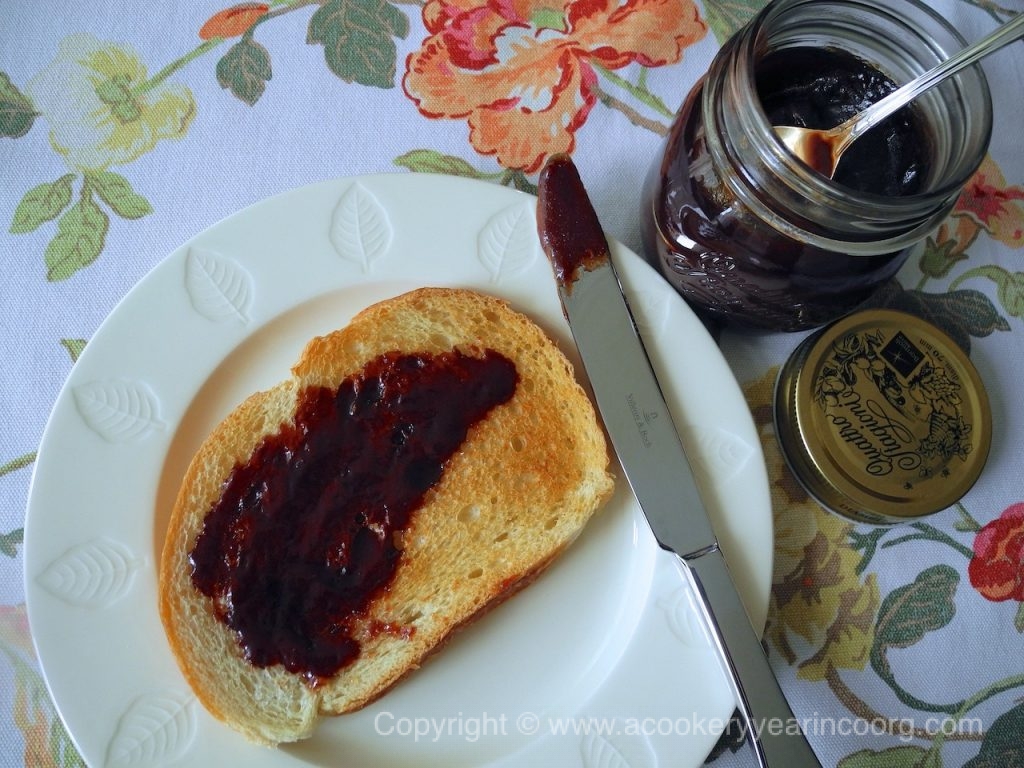
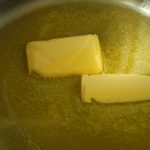
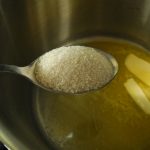
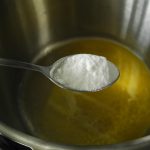
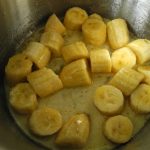
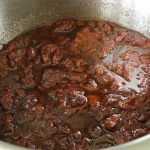
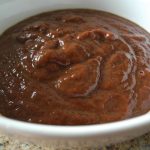
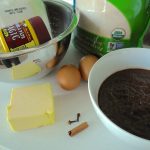
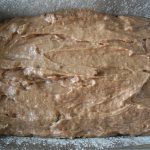
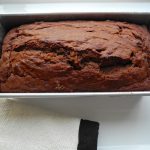
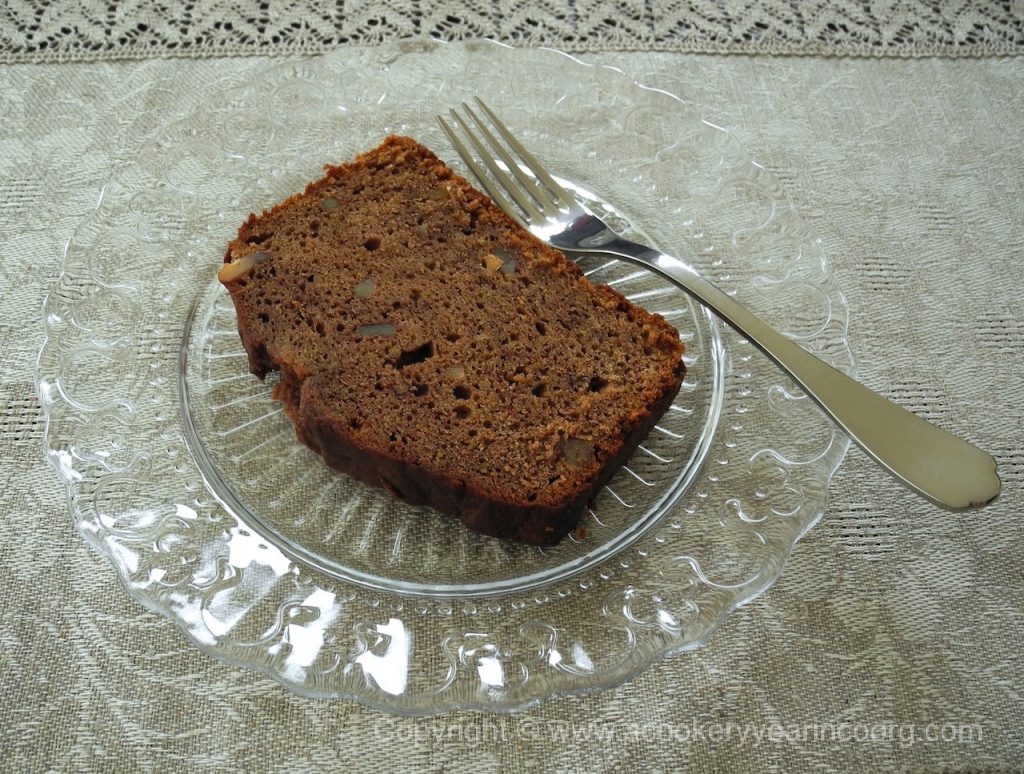
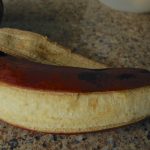
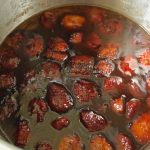
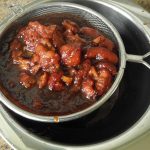
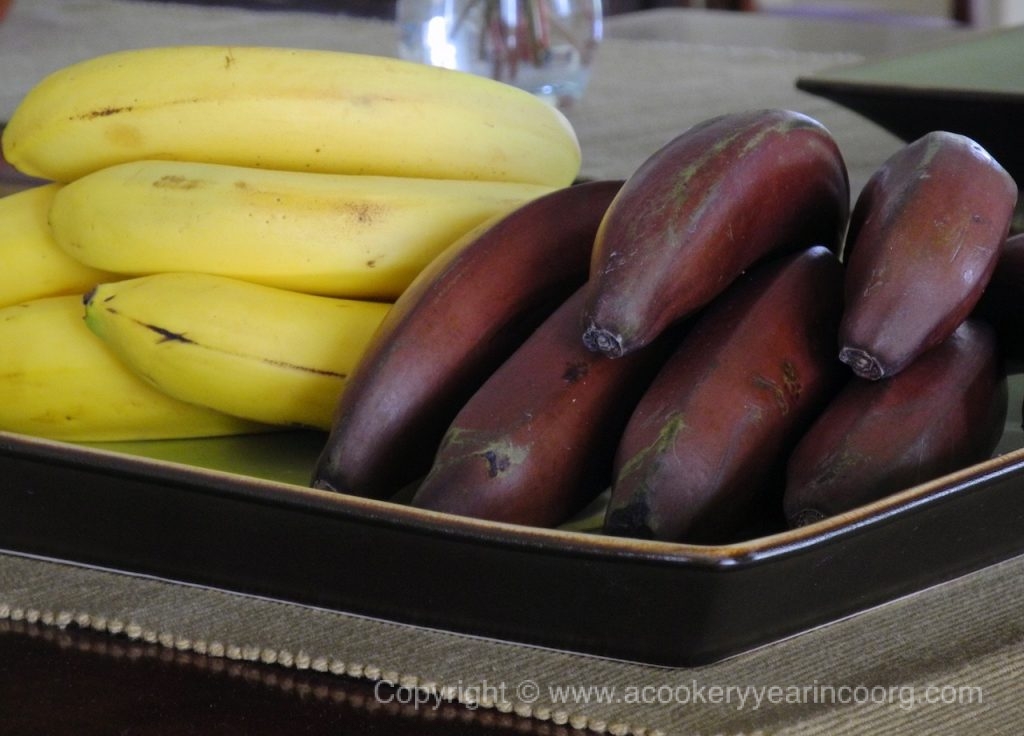
Yet another great post Shalini. I guess there is no home in Coorg that hasn’t tried the banana jam, halwa etc as there used to be abundance of ‘Bale Kole’ grown in the estates. When somthing is grown in abundance you miss to value it, I miss all the different types of banana that are available, chondé balé was a bit a premium variety when we were growing up, I remember. As you say, mara balé with a bit of tangy taste is probably the best for these recipes. I have to definetely try the Banana puree recipe and also the banana bread this long weekend.
Your blog is becoming into a wonderful repository for all the Kodava recipes at its best. Wonderful job and really appreciate all your efforts.
Thank you so much , Vindhya 🙂
I just made another batch with those red bananas and I’m very excited to note that the technique works even with way less butter! Speaking to Anjana, she mentioned that the quantity used in the original is specifically so it can be used in the Modernist Cuisine recipes.
So this batch of red bananas were pressure cooked with just 1/2 tbsp melted ghee, 1/4 tsp baking soda and 1 cup water. It wasn’t as rich as the previous batch, naturally, but had beautiful colour, and after straining out the coarse pulp and seeds and adding the lime juice and spices, it took just ten minutes of boiling to get another jar of excellent banana jam. There goes the diet!
Almost every trip to the market here throws up a reminder of what we took for granted growing up, the latest being the tiny guavas from Taiwan selling at…well, never mind 😉
I have been meaning to try this forever , ever since I read this post . What a lovely colour !! So is it just the caremelisation that makes it go from grey cream to this lovely red ? My MIL made some papaya jam the other day and it was so delicious , such a lovely happy orange .Ii would add dome freshly crushed pepper corn for a bit of heat after I had spread the thickest layer possible on toast . One slice with this and another with salted butter and pepper. I could never decide with which one to finish. I will try and report as soon as I have a bottle ready . Thank you for posting this one . Folks who turn almost every fruit into jams , preserves , squashes are simply genius. Crossing my fingers that it turns out spreadable 🙂 Thank you for sharing the second version with ghee . Sigh guava jelly .. but sometimes there would be a batch that was either too runny or just a blob . Mummy. If I dont try this I am the biggest idiot .
And the pictures Shalini how do you click these so beautifully? Love every one of them. each shot is a absolute masterpiece .
I never ceases to just amaze me how you pick the perfect bottles, jars dishes , table linen a spoon , a ladle even a dish cloth.
Hi Jyoti, sorry about the delayed response!
In the Modernist recipe, it’s a combination of several factors at work that produce that amazing colour and flavour so effectively. If you look at the Maillard reaction link, it explains how heat, pressure, increased alkalinity, and the added fat, combine to produce the browning. I was so pleased with how quickly you can whip up a small batch of this spread, when the fancy strikes.Go ahead and give it a try. I love papaya jam too, and that is exactly how I eat it- super thick layer on buttered toast! Never tried it with pepper. Sadly, papayas are far too pricey here to do any experimenting with. Besides, papaya jam was always best made from those huge “country” fruit from someone’s backyard!
Thank you as always for reading, and the appreciation. It makes any effort worthwhile.:-)